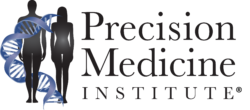In more evidence of precision medicine’s utility outside of oncology, ‘groundbreaking’ work published demonstrates the power of combining whole-genome sequencing, imaging, and metabolomics to identify people at risk of developing common health conditions
In December, we highlighted instances where precision medicine is making significant strides outside of oncology, including pain control, coronary interventions, and diagnosing genetic disorders in infants. That is encouraging news for hospital and health system leaders who have or are planning to start a precision medicine initiative.
Now comes more promising news: A new analysis published in Proceedings of the National Academy of Sciences (PNAS) shows that combining whole-genome sequencing, imaging, and metabolomics can help find individuals at risk of developing a number of prevalent health conditions.
The study was published by researchers supported by Human Longevity, Inc, a health genomics organization. The trial involved nearly 1,200 healthy adults who averaged 54 years of age. Roughly two-thirds were male and the rest female. They had whole-genome sequencing, and were “deeply phenotyped” using metabolomics, advanced imaging, clinical laboratory tests, and family/medical history.
Investigators found that about 1 in every 6 participants had at least one pathogenic genetic variant. When combined with deep phenotyping. One in 9 had genotype and phenotype associations, indicating a genetic disorder. Among the disorders uncovered, most of which were not previously known to the participants:
- Insulin resistance and/or impaired glucose tolerance (34.2% of participants);
- Elevated liver fat (29.2%);
- Cardiac structure or function abnormalities such as valvular disorders (16.2%);
- Significant calcified coronary artery plaque (11%);
- Elevated liver iron (9.3%);
- Cardiac arrhythmias such as atrial fibrillation (6.1%);
- Cardiac conduction disorders (4.8%);
- Early stage tumors, most malignant (1.7%).
Multi-Modal Assessment Provides ‘Comprehensive Health Evaluation’
Equally important, researchers did not see phenotype and genotype links in nearly 6% of individuals, suggesting that sequencing alone is not enough to make a conclusive diagnosis.
“This study shows that the definition of ‘healthy’ may not be what we think it is and depends upon a comprehensive health evaluation,” said J. Craig Venter, PhD, in a statement. He is the founder of Human Longevity and a member of the National Academy of Sciences.
Added David Karow, MD, PhD, Human Longevity’s President and Chief Innovation Officer: “Our traditional approach to the annual health assessment has been very superficial and will need to be replaced by data-driven measures that will be made possible as costs continue to decline for whole-genome sequencing, advanced imaging, especially MRI, and specialized blood analytics.”
Officials at Human Longevity have seen this coming for quite some time. Four years ago, Brad Perkins, MD, the organization’s Chief Medical Officer at the time, spoke at the Precision Medicine Institute’s 2016 Summit about the convergence of four trends that have allowed precision medicine to arrive at this point:
- Reduced sequencing costs,
- Increased computational power,
- The normalization of machine learning, and
- The emergence of value-based care.

In particular, advances in machine learning and translation are paving the way for the convergence of whole-genome sequencing, imaging, and metabolomics in a way that can ultimately lead to improved outcomes, noted Perkins. In 2006, he said, machine translation was limited by few languages, poor quality, and few users. Flash forward to 2016 and there were more than 500 million users, over 90 languages, vastly improved quality, and the ability for speech and image translation. Further advances since 2016 led to the Human Longevity team’s latest work published in PNAS.
In fact, these technological advances, explained Perkins, are putting medicine on a pathway to an approach that Human Longevity calls Health Nucleus, which integrates full body imaging with whole-genome sequencing, enabling proactive versus reactive healthcare. The findings reported in PNAS are a huge step in that direction.
-Dean Celia
Related Information:
To Demonstrate Precision Medicine Utility, Focus on Pharmacogenetics Studies and Data
